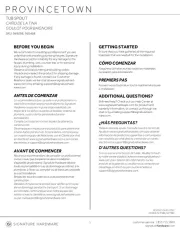Sun Joe SJ-APS-1G Handleiding
Sun Joe
Niet gecategoriseerd
SJ-APS-1G
Bekijk gratis de handleiding van Sun Joe SJ-APS-1G (36 pagina’s), behorend tot de categorie Niet gecategoriseerd. Deze gids werd als nuttig beoordeeld door 279 mensen en kreeg gemiddeld 4.6 sterren uit 140 reviews. Heb je een vraag over Sun Joe SJ-APS-1G of wil je andere gebruikers van dit product iets vragen? Stel een vraag
Pagina 1/36

Model SJ-APS-1G Form No. SJ-SJ-APS-1G-880E-MR2
ALL PURPOSE CORDLESS CHEMICAL SPRAYER
4-VOLT | 2.0 Ah | 1 GAL
© 2022 by Snow Joe
®, LLC
All rights reserved. Original instructions. SAVE THESE INSTRUCTIONS
1
EN
A Division of Snow Joe
®, LLC
R
OPERATOR’S MANUAL
IMPORTANT!
Safety Instructions
All Operators Must Read These
Instructions Before Use
Any electrical appliance can be dangerous if used incorrectly.
Some of the safety precautions given in this manual apply
generally to many appliances. Other warnings are specic to
the use of this cordless sprayer.
Always follow these safety guidelines. Failure to do so may
result in serious bodily injury or death.
mWARNING! This indicates a hazardous situation, which,
if not avoided, could result in death or serious injury.
mCAUTION! This indicates a hazardous situation, which,
if not avoided, could result in minor or moderate injury.
mDANGER! This indicates a hazardous situation, which,
if not followed, will result in death or serious injury.
General Safety
mWARNING! This appliance is not intended for use
by children or by unassisted, unsupervised persons whose
physical, sensory, or mental capabilities prevent them from
using it safely. Children should be supervised to ensure that
they do not play with the appliance.
Before starting up your machine, please check it carefully for
any defects. If you nd any, do not start up your machine.
Contact your authorized Snow Joe® + Sun Joe® dealer or
call the Snow Joe® + Sun Joe® customer service center at
1-866-SNOWJOE (1-866-766-9563).
mWARNING! Read all safety warnings and instructions.
Failure to follow the warnings and instructions may result in
electric shock, re and/or serious injury.
mWARNING! When using the cordless chemical sprayer,
basic safety precautions should always be followed to reduce
the risk of re, electric shock, and personal injury.
These include:
• Know your chemical sprayer. Read and understand the
operator’s manual and observe the warnings and instruction
labels axed to the tool.
• Do not operate the product in explosive atmospheres,
such as in the presence of ammable liquids, gases or
dust. Power tools create sparks which may ignite the dust
or fumes.
• Do not expose appliance to rain or wet conditions.
Water entering a power tool will increase the risk of
electric shock.
• Do not allow bystanders or children in the area while
operating this product. Exposure to some chemicals can
be hazardous.
• Use right appliance. Do not use appliance for any job
except that for which it is intended.
• This product is only suitable for outdoor use.
• Don’t force appliance. It will do the job better and with
less likelihood of a risk of injury at the rate for which it was
designed.
• Stay alert, watch what you are doing and use common
sense when operating this product. Do not use while
you are tired or under the inuence of drugs, alcohol or
medication. A moment of inattention while operating this
product may result in serious personal injury.
• Dress properly. Do not wear loose clothing or jewelry.
Contain long hair. Keep your hair, clothing, and gloves away
from moving parts. Loose clothes, jewelry, or long hair can
be caught in moving parts.
• Use safety equipment. Always wear eye protection with
side shields or goggles and a dust mask. Protect eyes, skin
and lungs against drifting spray and during mixing, lling,
and cleaning.
• Do not overreach. Keep proper footing and balance at all
times. Do not use on a ladder or unstable support.
Stable footing on a solid surface enables better control of
the product in unexpected situations.
• Do not use the product if the switch does not turn it on
and o. Any product that cannot be controlled with the
switch is dangerous and must be repaired.
• Store idle appliances indoors. When not in use,
appliances should be stored indoors in dry, and high or
locked-up place - out of reach of children.
• Maintain appliance with care. Keep clean for best
performance and to reduce the risk of injury.
Follow instructions for changing accessories.
• Check damaged parts. Before further use of the
appliance, a guard or other part that is damaged should be
carefully checked to determine that it will operate properly
and perform its intended function. Check for alignment of
moving parts, binding of moving parts, breakage of parts,
mounting, and any other condition that may aect its
operation. A guard or other part that is damaged should

2
be properly repaired or replaced by an authorized service
center unless indicated elsewhere in this manual.
• Keep the sprayer and its handle dry, clean and free
from oil and grease. Always use a clean cloth when
cleaning. Never use brake uids, gasoline, petroleum-
based products, or any strong solvents to clean your tool.
Following this rule will reduce the risk of loss of control and
deterioration of the enclosure plastic.
• Use this product in accordance with these instructions
and in the manner intended, taking into account the
working conditions and the work to be performed.
Use of the product for operations dierent from those
intended could result in a hazardous situation.
• Have this product serviced by a qualied repair person
using only identical replacement parts. This will ensure
that the safety of the power tool is maintained.
• When servicing the product, use only identical
replacement parts. Follow instructions in the Maintenance
section of this manual. Use of unauthorized parts or failure
to follow Maintenance instructions may create a risk of
shock or injury.
• Prevent unintentional starting. Carrying the appliance
with your nger on the switch or energizing appliance that
have the switch on invites accidents.
Specic Safety Rules for
Chemical sprayer
mDANGER! Risk of re or explosion. Do not spray
ammable liquids such as gasoline. Look for warning symbols
on the liquid container.
mWARNING! Some spray created from products used
with the sprayer contains chemicals that may cause harm to
health. Follow directions on containers of all such products.
To reduce your exposure to these chemicals, wear approved
safety equipment such as face masks that are specially
designed to lter out sprays, gloves, and other appropriate
protective equipment.
mCAUTION! When a ammable liquid is sprayed,
there may be danger of re or explosion, especially in a
closed room.
• Before using any pesticide or other spray materials in this
sprayer, read the label on its original container thoroughly
and follow its directions. Some spray materials are
dangerous and should not be used in this sprayer, as they
can damage the sprayer and cause serious bodily injury or
property damage.
• Electric shock hazard. Never spray toward electrical outlets.
• Do not use commercial grade chemicals or chemicals for
commercial or industrial purposes. Use only consumer
grade water-based lawn and garden chemicals.
• Do not pour hot or boiling liquids into the tank. These can
weaken or damage the hose or tank.
• Spray area must be well ventilated.
• Avoid spraying on windy days. Spray can be accidentally
blown onto plants or objects that should not be sprayed.
• Store the sprayer in a secure, well-ventilated indoor space
with the uid tank empty.
• Do not use caustic (alkali) self-heating or corrosive (acid)
liquids in this sprayer. These can corrode metal parts or
weaken the tank and hose.
• Know the contents of the chemical being sprayed.
Read all Material Safety Data Sheets (MSDS) and container
labels provided with the chemical. Follow the chemical
manufacturer’s safety instructions.
• Do not leave residue or spray material in the tank after
using the sprayer. Clean after each use.
• Do not smoke while using the sprayer, or spray where spark
or ame is present.
• Risk of injection. Do not discharge directly against skin.
• To reduce the risk of electric shock, do not put the sprayer
into water or other liquid. Do not place or store the sprayer
where it can fall or be pulled into a tub or sink.
• Maintain this product. Thoroughly inspect both the inside
and outside of the sprayer and examine the components
before each use. Check for cracked and deteriorated hoses,
leaks, clogged nozzles, and missing or damaged parts.
If damaged, have the product repaired before use. Many
accidents are caused by poorly maintained products.
• Always wear eye protection with side shields or goggles.
Failure to do so could result in uids entering your eyes
resulting in possible serious injury.
• Protect your lungs. Wear a face or dust mask when using
the sprayer. Following this rule will reduce the risk of serious
personal injury.
• Battery tools do not have to be plugged into an electrical
outlet; therefore, they are always in operating condition. Be
aware of possible hazards when not using your battery tool
or when changing accessories.
• Store the product out of the reach of children and do
not allow persons unfamiliar with the product or these
instructions to operate the product.
Battery + Charger
Safety Instructions
This manual contains important safety and operating
instructions for your battery and charger.
1. Before using the charger, thoroughly read all instructions
and cautionary markings.
mWARNING! If the motor housing is cracked or damaged,
do not insert the charging adaptor into the power tool or plug
the power tool into the mains outlet. There is a danger of
electric shock or electrocution.
2. This charger is ONLY intended to charge this rechargeable
battery. Any other use poses a risk of re, electric shock
or electrocution.

3
3. Do not place any object on top of the charger or place
the charger on a soft surface that may result in excessive
internal heat. Keep the charger away from any heat
source.
4. To reduce the risk of damaging the electric plug and
cord, pull the plug, not the cord, when disconnecting the
charger from the electric outlet.
5. Make sure the battery charging cable is located in a safe
place so that it will not be stepped on, tripped over or
otherwise subjected to damage or stress.
6. An extension cord should not be used unless absolutely
necessary. Using an improper extension cord poses a risk
of re, electric shock or electrocution.
7. Do not operate the charger if it has received a sharp
blow or has become damaged in any way. Contact the
Snow Joe® + Sun Joe® customer service center
at 1-866-SNOWJOE (1-866-766-9563) before
continuing use.
8. Do not disassemble the charger. If the charger requires
service or repair, contact an authorized Snow Joe® +
Sun Joe® dealer or call the Snow Joe® + Sun Joe®
customer service center at 1-866-SNOWJOE
(1-866-766-9563). Incorrect reassembly poses a risk of
electric shock, electrocution or re.
9. To reduce the risk of electric shock, unplug the charger
from the outlet before cleaning the unit.
10. Never attempt to connect two (2) chargers together.
11. DO NOT store or use the tool in locations where the
temperature may reach or exceed 104 ºF (40 ºC).
Dangerous storing locations include outdoor sheds or
metal buildings in the summer.
12. The charger is designed to operate on standard household
electrical power (100-240 V). Do not attempt to use it with
any other voltage!
NOTE: The integrated battery is not fully charged out of
the carton. Read the safety instructions and then follow
the charging notes and procedures.
13. The longest life and best performance can be obtained if
the integrated battery is charged when the air temperature
is between 64.4ºF – 75.2ºF (18ºC – 24ºC). Do not charge
the battery pack when the air temperature falls below
32ºF (0ºC) or above 104ºF (40ºC). Following these safety
measures will prevent damage to the battery pack.
14. Do not incinerate the integrated battery even if it is
seriously damaged or completely worn out. The battery
can explode in a re.
15. Battery chemicals cause serious burns – Never let a
damaged battery pack contact the skin, eyes or mouth.
Under abusive conditions, liquid may be ejected from the
battery; avoid contact. Liquid ejected from the battery
may cause irritation or burns. If a damaged battery pack
leaks battery chemicals, use rubber or neoprene gloves
to safely dispose of it. If skin is exposed to battery uids,
wash the aected area with soap and water and rinse
with vinegar. If eyes are exposed to battery chemicals,
immediately ush with water for 20 minutes and seek
medical attention. Remove and dispose of contaminated
clothing.
16. Recharge only with the charger specied by the
manufacturer. A charger that is suitable for one type of
battery pack may create a risk of re when used with
another battery pack.
17. Do not use appliance that is damaged or modied.
Damaged or modied batteries may exhibit unpredictable
behavior resulting in re, explosion or risk of injury.
Protection from environmental inuences
1. Wear suitable work clothes. Wear safety goggles.
2. Protect your cordless tool and the battery charger from
moisture and rain. Moisture and rain can cause dangerous
cell damage.
3. Do not use the cordless tool or the battery charger near
vapors and ammable liquids.
4. Use the battery charger and cordless tools only in dry
conditions and at an ambient temperature of 32ºF – 104°F
(0°C – 40°C). Do not expose a battery pack or appliance
to re or excessive temperature. Exposure to re or
temperature above 265ºF (130°C) may cause explosion.
5. Do not keep the battery charger in places where the
temperature is liable to reach over 104ºF (40ºC). In
particular, do not leave the battery charger in a car that is
parked in the sunshine.
6. Protect batteries from overheating. Overloads,
overcharging and exposure to direct sunlight will result in
overheating and cell damage. Never charge or work with
batteries that have been overheated.
7. Store the charger and your cordless tool only in dry
locations with an ambient temperature of 32ºF – 104°F
(0°C – 40°C). Store your lithium-ion battery pack in a
cool, dry place at a temperature of 77°F (25°C). Protect
the battery pack, charger and cordless tool from humidity
and direct sunlight. Only place fully charged batteries in
storage (charged to at least 40%).
8. Prevent the lithium-ion battery pack from freezing.
Battery packs that were stored below 32°F (0°C) for more
than 60 minutes must be discarded.
9. When handling batteries, be wary of electrostatic charge.
Electrostatic discharges can damage the electronic
protection system and the battery cells. Avoid electrostatic
charging and never touch the battery poles.
10. Follow all charging instructions and do not charge the
battery pack or appliance outside of the temperature
range specied in the instructions. Charging improperly
or at temperatures outside of the specied range may
damage the battery and increase the risk of re.
11. Do not modify or attempt to repair the appliance or the
battery pack except as indicated in the instructions for
use and care.
Product specificaties
| Merk: | Sun Joe |
| Categorie: | Niet gecategoriseerd |
| Model: | SJ-APS-1G |
Heb je hulp nodig?
Als je hulp nodig hebt met Sun Joe SJ-APS-1G stel dan hieronder een vraag en andere gebruikers zullen je antwoorden
Handleiding Niet gecategoriseerd Sun Joe
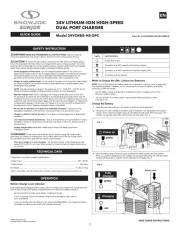
15 Juni 2025

28 Maart 2025

6 Januari 2025

6 Januari 2025

6 Januari 2025

6 Januari 2025

6 Januari 2025

6 Januari 2025

6 Januari 2025

11 Augustus 2023
Handleiding Niet gecategoriseerd
- Cosori
- VCM
- Nivona
- Optoma
- AXITEC
- Amiko
- Bright Starts
- Microair
- JK Audio
- Kodak
- Canyon
- Coravin
- Clarion
- Auna
- Vonyx
Nieuwste handleidingen voor Niet gecategoriseerd
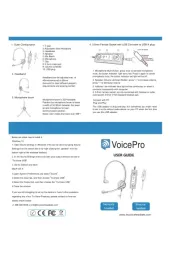
31 Juli 2025
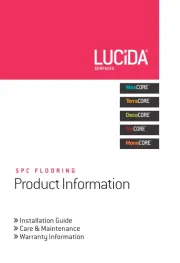
31 Juli 2025
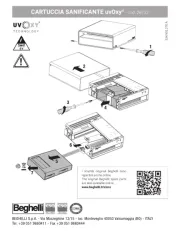
31 Juli 2025
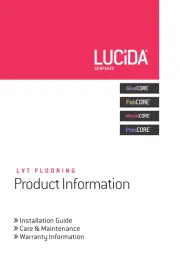
31 Juli 2025
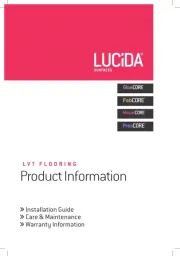
31 Juli 2025
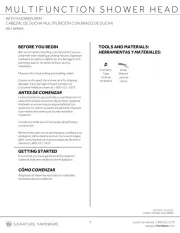
31 Juli 2025
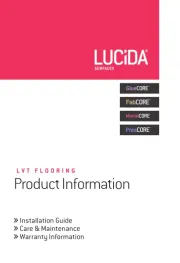
31 Juli 2025
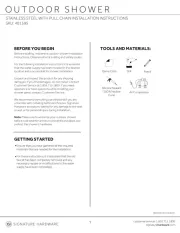
31 Juli 2025
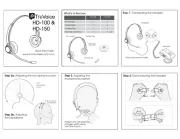
31 Juli 2025
